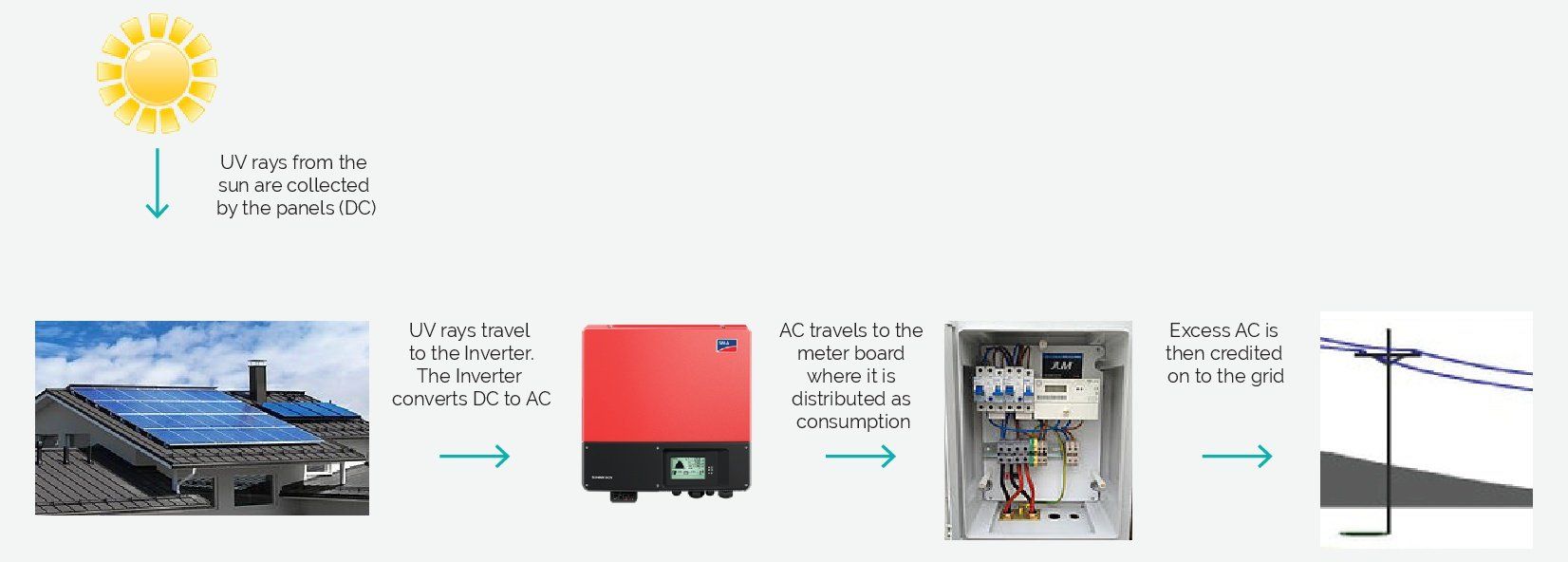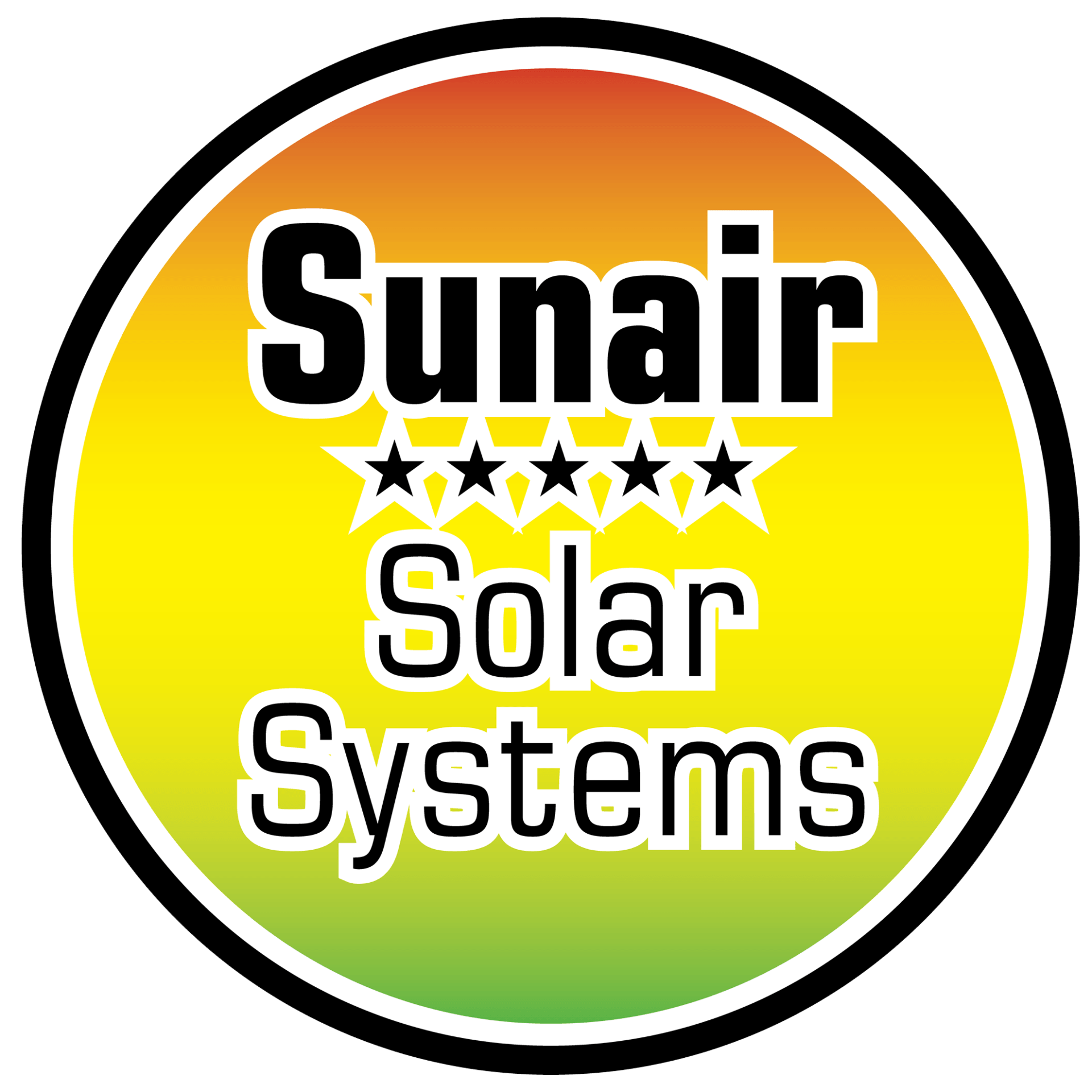Learn More About How Solar Works on the Central Coast
More than 45 Years’ Experience
Family Owned & Operated
Exceptional Customer Service & Competitive Prices
How Do Solar Systems Work?
Solar systems work by converting sunlight into electricity. Solar panels, made up of photovoltaic cells, absorb the sun's rays and generate direct current (DC) electricity. This DC electricity is then converted into alternating current (AC) electricity by a solar inverter. The AC electricity is sent to the home or business's electrical panel, where it can be used to power appliances and lights. Excess electricity can be stored in batteries or sold back to the utility grid.
Sunair Solar is the Central Coast’s leading solar system provider and has over 45 years’ experience installing solar systems for
homes and
businesses on the Central Coast,
Bateau Bay,
Gosford,
Woy Woy,
Wyong,
Erina,
Terrigal and
Wadalba. For more information or to request a quote, call our friendly team on
0400 645 585.
Helping You Save Money
Here at Sunair Solar, we understand many homes and businesses are struggling with rising electricity costs. Our skilled team has years of experience in solar energy and knows how to help you save money. Some of the ways we can help include:
- Offering high-quality yet affordable solar systems for your business
- Providing a fast & competitively priced installation service
- Installing your solar panels in the optimum location to absorb the most sunlight
- Provide solar storage options so no energy goes to waste
- Install a system that meets the eligibility requirements to take advantage of the government’s solar rebate system
- Provide advice on cleaning & maintenance of your new system so it continues to operate at its best
For more information or to organise a free consultation call our friendly team today!

Thank you for contacting Sunair Solar.
We will be in touch soon.
Please try again later.
Frequently Asked Questions
-
Where does solar energy come from?
Our sun is a naturally occurring nuclear reactor. It releases tiny packets of energy called photons, which travel the 93 million miles from the sun to Earth in about eight-and-a-half minutes. Every hour, enough photons impact our planet to theoretically satisfy global energy needs for an entire year.
Solar technology is improving and costs are dropping rapidly, although, our ability to harness the sun’s abundance of energy is on the rise. In fact, a report from the International Energy Agency indicates that solar energy could become the largest global source of electricity by 2050.
In the coming years, we will all be enjoying the benefits of solar-generated electricity in one way or another.
-
How does solar power work?
Photovoltaic (PV) solar panels are made up of many solar cells. Solar cells are made of silicon-like semiconductors. They are constructed with a positive layer and a negative layer, which together create an electric field, just like in a battery.
When photons hit a solar cell, they knock electrons loose from their atoms. If conductor's attach to the positive and negative sides of a cell, an electrical circuit is created. When electrons flow through such a circuit, they generate electricity.
Multiple cells make up a solar panel, and multiple panels (modules) can be wired together to form a solar array. The more panels you can deploy, the more energy you can expect to generate.
-
How does the electricity work?
PV solar panels generate DC (direct current) electricity. With DC electricity, electrons flow in one direction around a circuit.
With AC (alternating current) electricity, electrons are pushed and pulled, periodically reversing direction, much like the cylinder of a car’s engine. Generators’ create AC electricity when a coil of wire is spun next to a magnet. Many different energy sources can drive this generator, such as gas or diesel fuel, hydroelectricity, nuclear, coal, wind, or solar.
AC electricity was chosen for the Australian electrical power grid, primarily because it is less expensive to transmit over long distances. However, solar panels create DC electricity. How is DC electricity delivered into the AC grid? We use an inverter.
-
How do inverters work?
PV solar panels generate DC (direct current) electricity. With DC electricity, electrons flow in one direction around a circuit.
With AC (alternating current) electricity, electrons are pushed and pulled, periodically reversing direction, much like the cylinder of a car’s engine; generators create AC electricity when a coil of wire is spun next to a magnet.
-
NetMetering
A grid-tied PV system has no batteries. So when the sun is shining and the solar user doesn’t use all of the energy generated in a day, excess power is sent out of the house and directed to the grid.
This is called “back feeding” the grid. At night, the grid will provide energy for lights and other appliances as usual, so solar users are covered in exchange for the excess energy they share with the grid during the day. A net meter records the energy sent, compared to the energy received from the grid.
We Take Pride In Using The Best Quality Brands For Our Customers
Site Links
What We Do
Locations
Trading Hours
- Monday
- -
- Tuesday
- -
- Wednesday
- -
- Thursday
- -
- Friday
- -
- Saturday
- -
- Sunday
- -
Get In Touch
Steel Guiliana: 0400 645 585
Steel Guiliana Enterprises Pty Ltd
NSW Electrical Licence: EC38650
CEC Solar Accreditation: A4505752

















